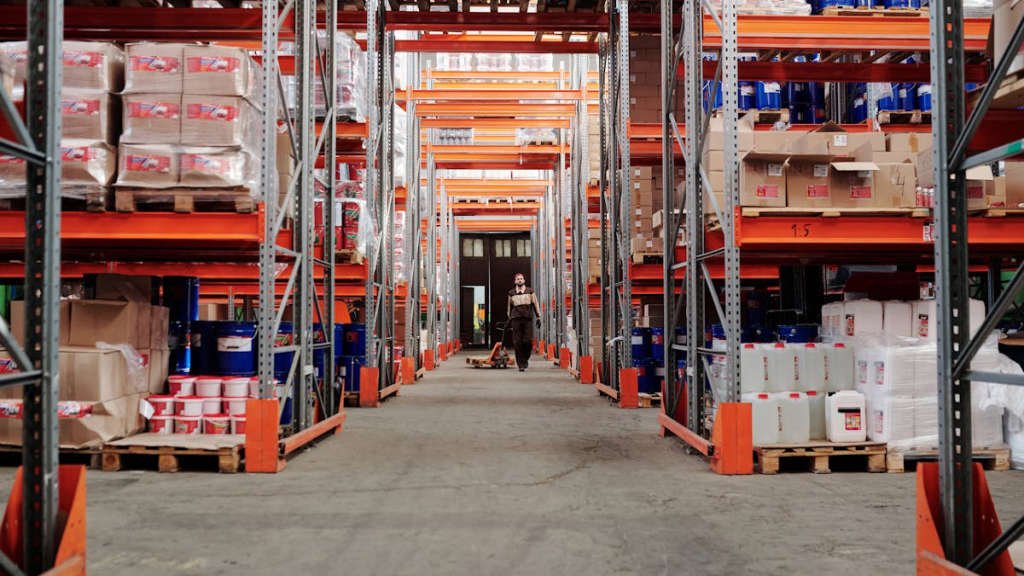In the rapidly evolving world of e-commerce, selecting the right fulfillment strategy can significantly influence a business’s success. As online shopping continues to grow, companies must navigate complex logistics to ensure timely delivery and customer satisfaction. Having a well-defined fulfillment plan not only enhances the customer experience but also optimizes operational efficiency. This blog post explores some of the most effective fulfillment strategies that e-commerce businesses can implement to thrive in a competitive landscape.
Main Points
- Understanding the importance of streamlined logistics.
- The role of technology in enhancing fulfillment operations.
- Choosing between in-house fulfillment and utilizing a third-party logistics provider.
- How a fulfillment center in Miami can benefit local businesses.

Optimizing Warehouse Operations for Enhanced Efficiency
In today’s competitive landscape, optimizing warehouse operations is essential for businesses seeking to thrive. Enhanced efficiency not only reduces costs but also improves customer satisfaction. To achieve this, companies should focus on several key strategies:
- Streamlining Processes: Regularly assess and refine workflows to eliminate redundancies.
- Investing in Technology: Utilize automated systems and software to track inventory and manage orders effectively.
- Training Staff: Equip employees with the necessary skills to adapt to new technologies and methodologies.
By integrating these strategies, especially in a fulfillment center in Miami, organizations can significantly enhance their warehouse efficiency and productivity. Ultimately, it’s about creating a more responsive and agile operation.

Leveraging Technology for Streamlined Order Processing
In today’s fast-paced market, efficiency remains paramount. Utilizing advanced technology solutions leads to a remarkable evolution in order processing. Automated systems reduce human error and enable real-time tracking, ensuring transparency throughout the supply chain. However, while implementing these technologies, companies must consider integration challenges. Many are tempted to overload their systems, yet a balanced approach fosters smoother operations. Ultimately, a thoughtful selection of tech tools strengthens your workflow and enhances customer satisfaction.
Key Benefits of Technology Integration
| Benefit | Description |
|---|---|
| Speed | Faster order processing times due to automation. |
| Accuracy | Minimized errors with automated data entry. |
| Scalability | Easily adjust order processing capacity to meet demand. |

Best Practices in Inventory Management for E-Commerce Success
Effective inventory management is crucial for any e-commerce venture. Understanding customer demand helps tailor stock levels and avoid overstocking or stockouts. It’s also wise to implement a reliable tracking system that enables real-time updates, ensuring you’re never blindsided by sudden changes in market trends. Additionally, fostering strong relationships with suppliers can lead to flexible delivery options and better negotiation terms. However, never underestimate the role of analytics; they guide decisions and optimize your operations.
Striking a Balance
A key challenge lies in finding balance. You want enough stock to meet customer needs, but holding too much can drain resources. Efficient forecasting methods can ease this tension, especially when paired with seasonal analysis. Adaptability is equally important; responding swiftly to unforeseen circumstances is essential for long-term success. Emphasizing these practices not only positions your business for growth but also enhances the overall customer experience.
Implementing Multi-Channel Fulfillment Strategies
As businesses evolve, adopting multi-channel fulfillment strategies becomes pivotal. This approach allows businesses to engage customers across various platforms while optimizing efficiency. However, implementing these strategies can often lead to complexities. For instance, integrating inventory management systems can be challenging. Additionally, navigating shipping logistics efficiently is crucial. Ultimately, the key to success lies in maintaining clear communication among stakeholders and ensuring seamless operations across channels.
Key Considerations
- Assess Technology Needs: Identify the tools necessary for integration.
- Streamline Inventory: Ensure products are available across all platforms.
- Monitor Performance: Regularly evaluate fulfillment effectiveness.
| Channel | Advantages | Challenges |
|---|---|---|
| E-commerce | Wide reach, convenience | High competition |
| Retail | Personal touch, immediate access | Limited inventory |
In conclusion, while the journey of implementing multi-channel fulfillment strategies may seem daunting, the rewards often outweigh the challenges. Ultimately, adopting a customer-centric mindset can lead to enhanced satisfaction, thereby driving growth.
Understanding Customer Expectations in Delivery Services
In today’s fast-paced world, customers have developed heightened expectations regarding delivery services. They desire not merely speed but also reliability and transparency. This means that businesses must continually adapt. Surprisingly, many companies underestimate the complexity involved. For example, while a two-day shipping promise sounds appealing, the underlying logistics can often lead to unforeseen delays. Hence, clear communication throughout the delivery process is paramount. So, how can businesses meet these expectations without overstretching their resources? The answer lies in understanding the nuances of customer priorities.
Sustainable Fulfillment Practices: Balancing Efficiency and Environment
In today’s rapidly evolving world, businesses face a pressing challenge: how to implement sustainable fulfillment practices without sacrificing efficiency. This balance is crucial, especially when consumer awareness of environmental issues rises. Companies can adopt innovative strategies, like optimizing supply chains and minimizing waste. However, adherence to these practices can often seem daunting.
“Sustainability is no longer an option; it’s a necessity.” – Unknown
Thus, exploring the dual benefits of efficiency and sustainability positively impacts the planet and enhances brand loyalty.
Key Strategies for Implementation
| Strategy | Description |
|---|---|
| Eco-friendly packaging | Utilizing biodegradable materials to reduce waste. |
| Energy-efficient logistics | Implementing green transportation methods to cut emissions. |
Overall, combining efficiency with sustainable practices not only meets current consumer demands but also sets a precedent for future business operations. The journey is complex, yet the rewards are undeniable.
Conclusion
In conclusion, choosing the right fulfillment strategies is crucial for any e-commerce business aiming to thrive in a competitive landscape. By understanding the unique needs of your customers and aligning your fulfillment processes accordingly, you can significantly enhance their shopping experience. Additionally, leveraging technology can streamline operations, reducing costs and improving efficiency. Remember, fulfillment isn’t just about delivering products; it’s about creating a seamless experience that builds trust and loyalty. As we move further into an increasingly digital world, staying agile and adaptive will set you apart. In my opinion, embracing these strategies with a genuine focus on customer satisfaction will pave the way for sustained growth and success.
Frequently Asked Questions
What is fulfillment?
Fulfillment refers to the process of delivering products or services to customers after they place an order. It encompasses inventory management, order processing, and shipping.
Why is fulfillment important for businesses?
Fulfillment is crucial because it directly affects customer satisfaction, repeat business, and overall operational efficiency. A smooth fulfillment process can lead to positive customer experiences.
How can I improve my fulfillment process?
To improve your fulfillment process, consider investing in technology for inventory management, optimizing warehouse layouts, and streamlining communication between departments responsible for order processing.
What are common challenges in fulfillment?
Common challenges in fulfillment include inventory discrepancies, shipping delays, order inaccuracies, and managing returns effectively.
Can outsourcing fulfillment be beneficial?
Yes, outsourcing fulfillment can be beneficial as it allows businesses to focus on core activities, scales operations without heavy investment in infrastructure, and often improves efficiency through specialized fulfillment providers.

